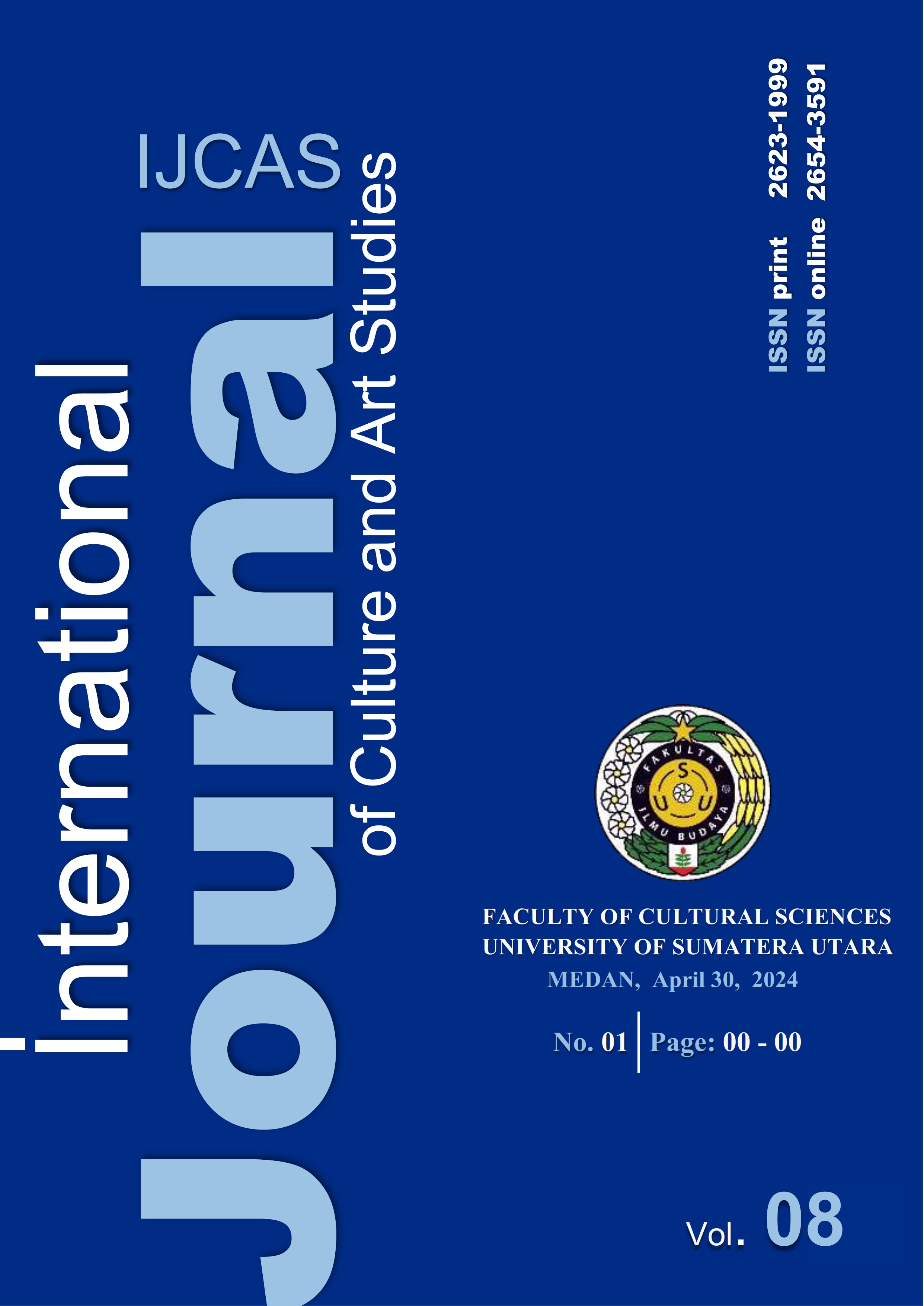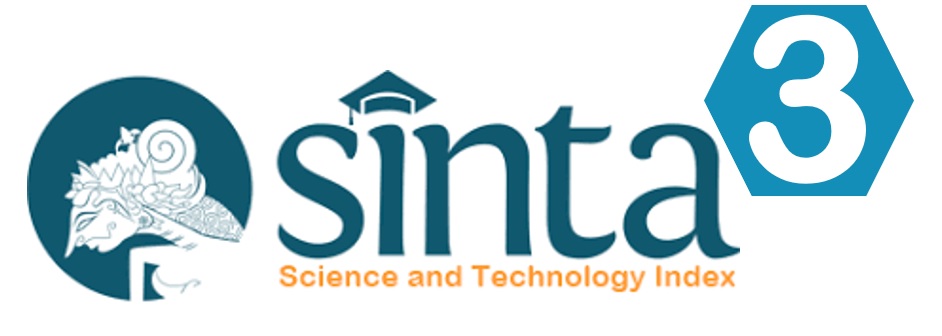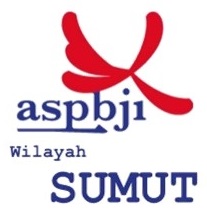Locally Taboo Words Within East Java Society: A Sociolinguistic Study
DOI:
https://doi.org/10.32734/ijcas.v8i1.13409Keywords:
Culture, Javanese People, Perception, Taboo Words, Rural and UrbanAbstract
Researchers can learn a lot about a culture's values, beliefs, and fears by looking at the things that people don't do. What a culture thinks is holy, dangerous, or rude can be shown by taboos. This can help us figure out how societies work and how they've changed over time. This article analyzes the use of taboos in the daily communication of the people of East Java, particularly adolescents. Rural and urban Javanese have differing perspectives on the usage of taboo language, respectively. This study intends to examine the opposition of views between rural and urban Javanese individuals who use taboo language to communicate, as well as the types of taboo words typically employed by Javanese people. The type of data obtained from the study is qualitative, thus the data that will be reported in this study will be in the context of the usage of taboo language by rural, urban, and East Java Province-dwelling Javanese. The data was also collected by Interviews: Talking to people from a wide range of backgrounds in depth. Ask them open-ended questions about how they feel about banned words when they're used, and how they make them feel. Since rural Javanese continue to use language and manners, their perspectives on taboo language analysis differ from those in urban areas. The East Javanese believe that profanity and restricted language should not be utilized in speech and social interactions.Â
Downloads
References
Allan, K., & Burridge, K. (1991). Euphemism and dysphemism. New York: Oxford University Press.
Allan, K., & Burridge, K. (2006). Forbidden words: Taboo and the censoring of language. Cambridge University Press.
Anggraeni, A. (2019). Identitas Gender dalam Penggunaan Kata-Kata Tabu Bahasa Jawa di Jawa Timur. Deskripsi Bahasa, 2(1), 68–75. https://doi.org/10.22146/db.v2i1.345.
Gapur, A. (2024). Disfemisme : dalam ragam bahasa pria Jepang pada manga. Abdul Media Literasi. https://amedialiterasi.com/index.php/Book/article/view/12
Gapur, A., & Dermawan, R. (2018). Dirty Words in Miki Yoshikawa’S Yanki-Kun To Megane-Chan Comic (Review of Lexical Form). Aicll: Annual International Conference on Language and Literature, 1(1), 62–68. https://doi.org/10.30743/aicll.v1i1.9
Gusnawaty, G., Lukman, L., & Nurwati, A. (2022). A closer look on linguistic politeness among Bugis youth: Tabék in a situational and philosophical context. REiLA : Journal of Research and Innovation in Language, 4(2), 219-231. https://doi.org/10.31849/reila.v4i2.9870
Hikmah, I. (2019). Classification of swear words in Javanese used by East Java people. Proceedings of the Fifth Prasasti International Seminar on Linguistics. Atlantis Press. doi: 10.1111/j.1745-6924.2009.01115.x
Janschewitz, K. (2008). Taboo, emotionally valenced, and emotionally neutral word norms. Behavior Research Methods, 40(4), 1065–1074. https://doi.org/10.3758/BRM.40.4.1065
Jay, K. L., & Jay, T. B. (2015). Taboo word fluency and knowledge of slurs and general pejoratives: deconstructing the poverty-of-vocabulary myth. Language Sciences. http://dx.doi.org/10.1016/j.langsci.2014.12.003
Jay, T. (2009). The utility and ubiquity of taboo words. Perspectives on Psychological Science, 4(2), 153–161. https://doi.org/10.1111/j.1745-6924.2009.01115.x
Jay, T., Caldwell-Harris, C., & King, K. (2008). Recalling taboo and non-taboo words. American Journal of Psychology, 121, 83-103.
Ljung, M. (2011). Swearing: A cross-cultural linguistic study. UK: Palgrave Macmillan.
Perangin-angin, A. B. (2022). Teenage taboo jargon among high schoolers and undergraduates. *Talenta USU, LingPoet: Journal of Linguistics and Literary Research, 3*(2), 22-27.
Pratama, D., Faoziyah, N., Siswanto, A., & Hikmawaty, H. (2022). Variasi Bahasa Remaja dalam Penggunaan Media Sosial. Jurnal Konfiks, 9(1). https://doi.org/https://doi.org/10.26618/konfiks.v9i1.5455
Pujiono, M., Nasution, A. A., Taulia, & Gapur, A. (2023). Tabu dalam Bahasa Jawa Deli: Kajian Sosiopragmatik. PT. Literasi Nusantara Abadi Grup.
Resticka, G. A., & Nurdianto, E. (2020). Kata Tabu dalam Bahasa Indonesia yang Mempunyai Makna Pelacuran (Kajian Leksikografi). Seminar Nasional Pengembangan Sumber Daya Perdesaan dan Kearifan Lokal Berkelanjutan X.
Sriyanto, S. and Fauzie, A. (2017) “Penggunaan Kata Å“Jancuk Sebagai Ekspresi Budaya dalam Perilaku Komunikasi Arek di Kampung Kota Surabayaâ€, Jurnal Psikologi Teori dan Terapan, 7(2), pp. 88–102. http://dx.doi.org/10.26740/jptt.v7n2.p88-102
Stapleton, Karyn. (2010). Swearing. In Miriam A. Locher & Sage L. Graham (Eds.), Interpersonal Pragmatics (pp. 289). Berlin: Walter de Gruyter GmbH & Co.
Wahyuni, W., Mahyuni, M., & Mahyudi, J. (2019). Ekspresi Tabu Bahasa Wanita pada Status dan Komentar di Jejaring Sosial Instagram. LINGUA : Jurnal Bahasa, Sastra, Dan Pengajarannya, 16(2), 285–296. https://doi.org/10.30957/lingua.v16i2.608
Wardhaugh, R., & Fuller, J.M. (1986). An Introduction to Sociolinguistics. New York: Basil Blackwell.
Downloads
Published
How to Cite
Issue
Section
License
Copyright (c) 2024 Alemina Br. Perangin-angin, Zurriyati A. Jalil, Juli Samuel Pranata, Firdha Amalia

This work is licensed under a Creative Commons Attribution-ShareAlike 4.0 International License.













